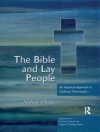This electronic version has been made available under a Creative Commons (BY-NC-ND) open access license. The eighteenth-century was long deemed ‘the classical age of the constitution’ in Britain, with cabinet government based on a two-party system of Whigs and Tories in Parliament, and a monarchy whose powers had been emasculated by the Glorious Revolution o. This study furthers the work of Sir Lewis Namier who argued in 1929 that no such party system existed, George III was not a cypher and that Parliament was an administration comprising of factions and opposition. George III was a high-profile and well-known character in British history whose policies have often been blamed for the loss of Britain’s American colonies, around whom rages a perennial dispute over his aims: was he seeking to restore royal power, or merely excercising his constitutional rights?. The first chronological survey of the first ten years of George III’s reign through power politics and policy-making.
Jadual kandungan
Preface 1. The Parameters of Politics 2. The Political Scenario in 1760 3. Pitt and Newcastle (1760-1762): War and Peace 4. The Bute Ministry (1762-1763): Peace and Cider 5. The Grenville Ministry (1763-1765): Wilkes and America 6. The First Rockingham Ministry (1765-1766): The Stamp Act Crisis 7. The Chatham Ministry. I. The Year of Charles Townshend (1766-1767): India and America 8. The Chatham Ministry. II. Grafton as Caretaker (1767-1768): Political re-alignments 9. The Grafton Ministry (1768-1770) The Middlesex Election and the Townshend Duties Crisis 10. George III, Lord North, and the defeat of ‘faction’ (1770) 11. Conclusion: Factions of Parties? Bibliography Index
Mengenai Pengarang
Peter D. G. Thomas is Emeritus Professor of History at the University of Wales, Aberystwyth












